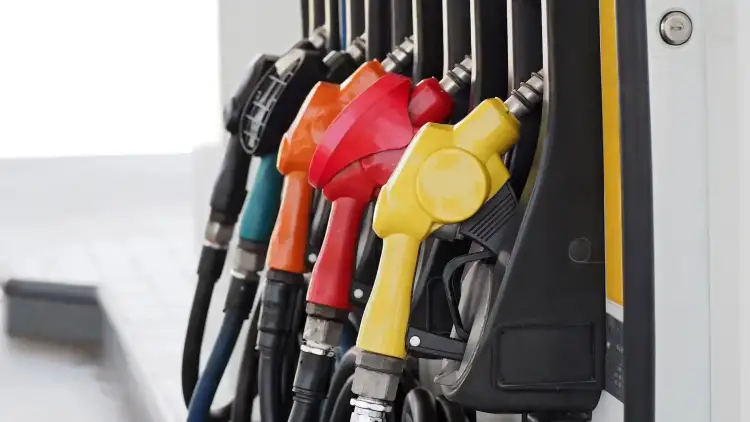- Is Suzuki Baleno A Good Choice as A Used Car?
- Specification Comparison
- Generation-Based Breakdown
- Conclusion
Is Suzuki Baleno A Good Choice as A Used Car?

For car buyers in Saudi Arabia (KSA), the Suzuki Baleno has become a popular option in the compact car segment for its affordability, reliability, and fuel efficiency. But is it a good choice as a used car? The answer largely depends on the generation of the Baleno you’re considering, as each iteration brings unique features and challenges.
This article aims to guide you through the different generations of Suzuki Baleno to help you make an informed decision. By comparing specifications, highlighting pros and cons, and diving into known issues, we'll help you determine which Baleno model is the best value for money in the KSA used car market.
Specification Comparison
Below is a table comparing the specifications of Suzuki Baleno generations that KSA buyers care most about. This will allow you to easily spot the differences and pick the model that aligns best with your needs.
| Generation Name/Years | Engine Options | Fuel Economy (km/l) | Transmission | Drivetrain | Notable Features |
|---|---|---|---|---|---|
| 1st Generation (1995–2002) | 1.3L, 1.6L Petrol | 12–15 km/l | Manual/Automatic | FWD | Basic features, limited interior space |
| 2nd Generation (2015–2020) | 1.2L, 1.4L Petrol | 18–22 km/l | CVT/Manual | FWD | CarPlay, improved safety, spacious interior |
| 3rd Generation (2021–Present) | 1.5L Petrol | 19–23 km/l | CVT/Manual | FWD | Advanced infotainment, enhanced safety, premium feel |
Generation-Based Breakdown

1st Generation Suzuki Baleno (1995–2002)
Pros and Cons
Pros:
- Affordable price in the used car market.
- Reliable engine for daily commuting.
Cons:
- Outdated design and features.
- Limited safety features compared to modern standards.
- Interior space may feel cramped for families.
Key Features and Updates Introduced
- Basic interior and exterior design.
- No advanced infotainment or safety systems.
Engine Options and Fuel Efficiency
- 1.3L Petrol: ~12–14 km/l
- 1.6L Petrol: ~13–15 km/l
Known Problems and Common Issues
- Rust issues in older models, particularly in humid climates.
- Electrical problems reported by owners.
- Manufacturer recalls related to early ABS systems.
Recommended Year to Purchase
🔗 View Suzuki Baleno 1998 1998 Suzuki Baleno
Overview
The 1st generation Suzuki Baleno is best for buyers looking for a budget-friendly car for basic commuting needs. It lacks modern features but offers reliable performance. However, it may not be the best option for families or those requiring advanced safety features. In KSA, its popularity is limited due to its dated appearance and lack of space.
2nd Generation Suzuki Baleno (2015–2020)
Pros and Cons
Pros:
- Excellent fuel economy, ideal for KSA where petrol prices fluctuate.
- Spacious interior with improved cargo space.
- Modern infotainment system with CarPlay.
Cons:
- CVT transmission may not appeal to all drivers.
- Plastic-heavy interior materials.
Key Features and Updates Introduced
- Touchscreen infotainment system with Apple CarPlay.
- Better safety features, including airbags and ABS.
- Improved cabin and boot space.
Engine Options and Fuel Efficiency
- 1.2L Petrol: ~20–22 km/l
- 1.4L Petrol: ~18–20 km/l
Known Problems and Common Issues
- Occasional CVT transmission overheating in extreme heat conditions, which is relevant in KSA.
- Minor issues with infotainment system responsiveness.
Recommended Year to Purchase
🔗 View Suzuki Baleno 2018 2018 Suzuki Baleno
Overview
The 2nd generation Baleno strikes a balance between affordability and features, making it a strong contender for buyers in KSA. It offers impressive fuel efficiency and modern features, making it suitable for city driving. Its spacious interior is well-suited for small families.
3rd Generation Suzuki Baleno (2021–Present)
Pros and Cons
Pros:
- Premium design and build quality.
- Advanced safety features like lane assistance and collision warnings.
- Exceptional fuel economy.
Cons:
- Higher price point in the used car market.
- Limited availability in KSA as a used car.
Key Features and Updates Introduced
- Modern infotainment system with Android Auto and Apple CarPlay.
- Enhanced safety with advanced driver assistance systems.
- Improved suspension for smoother rides.
Engine Options and Fuel Efficiency
- 1.5L Petrol: ~19–23 km/l
Known Problems and Common Issues
- No significant issues reported due to its recent launch.
Recommended Year to Purchase
🔗 View Suzuki Baleno 2022 2022 Suzuki Baleno
Overview
The 3rd generation Baleno is an excellent choice for those seeking a modern, stylish, and feature-rich vehicle. Its premium feel and advanced safety systems make it well-suited for urban environments in KSA. However, its higher price point may deter budget-conscious buyers.
Conclusion
For KSA buyers looking for the best value for money in the used Suzuki Baleno market, the 2nd Generation Suzuki Baleno (2015–2020) stands out as the ideal option. It offers a great combination of fuel efficiency, modern features, and affordability. While the 3rd generation is more advanced, its higher price may not justify the investment for some buyers.
Alternatives
If you're considering other options, here are some competitors:
- Toyota Yaris: Renowned for reliability and fuel economy.
- Hyundai Accent: Offers a spacious interior and modern features.
- Honda Jazz/Fit: Known for excellent cargo space and build quality.
These models also perform well in the KSA market and can be great alternatives to the Suzuki Baleno.
Tips Before Purchasing
- Inspect Thoroughly: Check the car’s condition, especially for rust or wear in older models.
- Verify Service Records: Ensure regular maintenance has been performed.
- Test Drive: Pay attention to transmission smoothness and engine performance.
- Check Recalls: Verify if the specific model year has unresolved manufacturer recalls.
- Consider Climate Impact: For KSA’s hot climate, ensure the air conditioning system is functioning well.
By following these tips, you can confidently purchase a Suzuki Baleno that meets your needs and budget.













